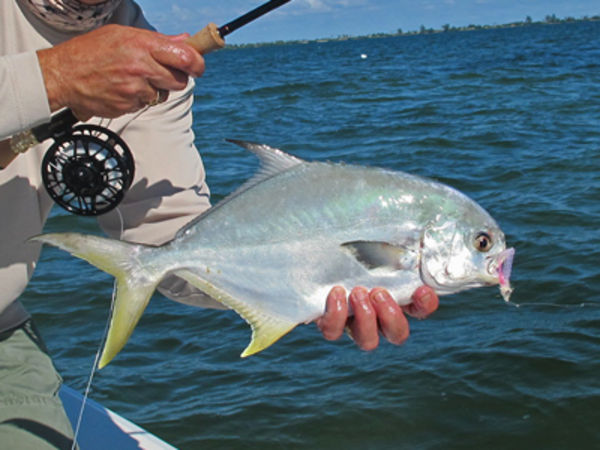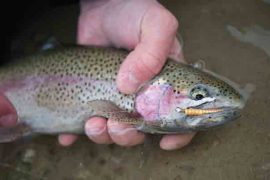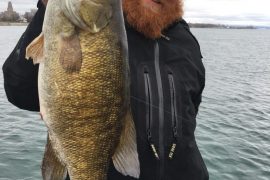I had just moved to Stuart from Miami, when I went to a local bridge catwalk and joined many other anglers fishing shoulder to shoulder during what was rumored to be a hot pompano bite. We were all casting jigs in hopes of nailing a few fatties, when I hooked a fish that fought so hard that I assumed it was a jack crevalle. That is, until I saw its gleaming mercury-colored flanks at the surface and realized it was a 5-pound pomp.
It was that 20-inch-plus slab that made me a big fan and sparked in me the desire to target pompano with flies. Shortly after immersing myself in this new pursuit, I quickly discovered that pomps are not just an incidental catch, they can be successfully targeted with the fly rod. And success can be celebrated with a sumptuous dinner!
THE MIGRATION
Pompano range from the Carolinas to Florida, and all the way to Texas, but the fishery is most developed in the Sunshine State, where residents and winter visitors enthusiastically target them in the surf, in bays and coastal rivers, as well as the Intracoastal Waterway. While many of the fish reside in Florida’s Panhandle and up the Southeast Atlantic coast in the summer, they move south en masse as water temps plummet below the 70 degree mark. While considerably more challenging than fishing for them in the surf with natural bait or jigs, pompano are sight-fished by fly rodders over light-sand bottom. This practice is particularly productive in Florida Panhandle beaches and a number of sand bars throughout the southeast coast of the state.
By the time strong cold fronts reach Florida, the bulk of the pompano will have moved well south of Tampa Bay on the Gulf Coast, and roughly down to Vero Beach on the Atlantic side. The ideal water temperature is above 68 degrees. I have experienced mass evacuations once the temp falls below 65 where I fish, from Ft. Pierce to Stuart, and have had to follow the fish south to the Palm Beaches, where the water was still slightly warmer.
Early South Florida pompano in October are below the legal size (11-inch at the fork), but within a couple of weeks, bigger fish move in. It’s actually rare to see those little surf pomps on inside waters. They usually fall in the 13- to 16-inch-length class, with the occasional 17- to 20-inch, 3- to 5-pound slab that will burn some serious drag on the initial run of 25 yards or more.
RECOMMENDED TACKLE
The first thing I recommend is to be practical about pompano fishing. There will be some situations that just aren’t conducive to using fly gear. You can’t just head out with a floating line and expect to catch them in depths greater than 5 feet or so, especially in a strong current or with a stiff wind blowing onshore. The good news is that, despite the concentrations of fish found in areas with heavy current — like bridges, inlets and passes, and overshallow, inshore wrecks (in places like Florida Bay and Tampa Bay) — pompano love to forage in the shallows, often over shallow shell bars, oyster bars and grass flats, where your chances of scoring increase exponentially, even using a floating line.
Nevertheless, I prefer a clear intermediate line, it’s much more versatile,…





